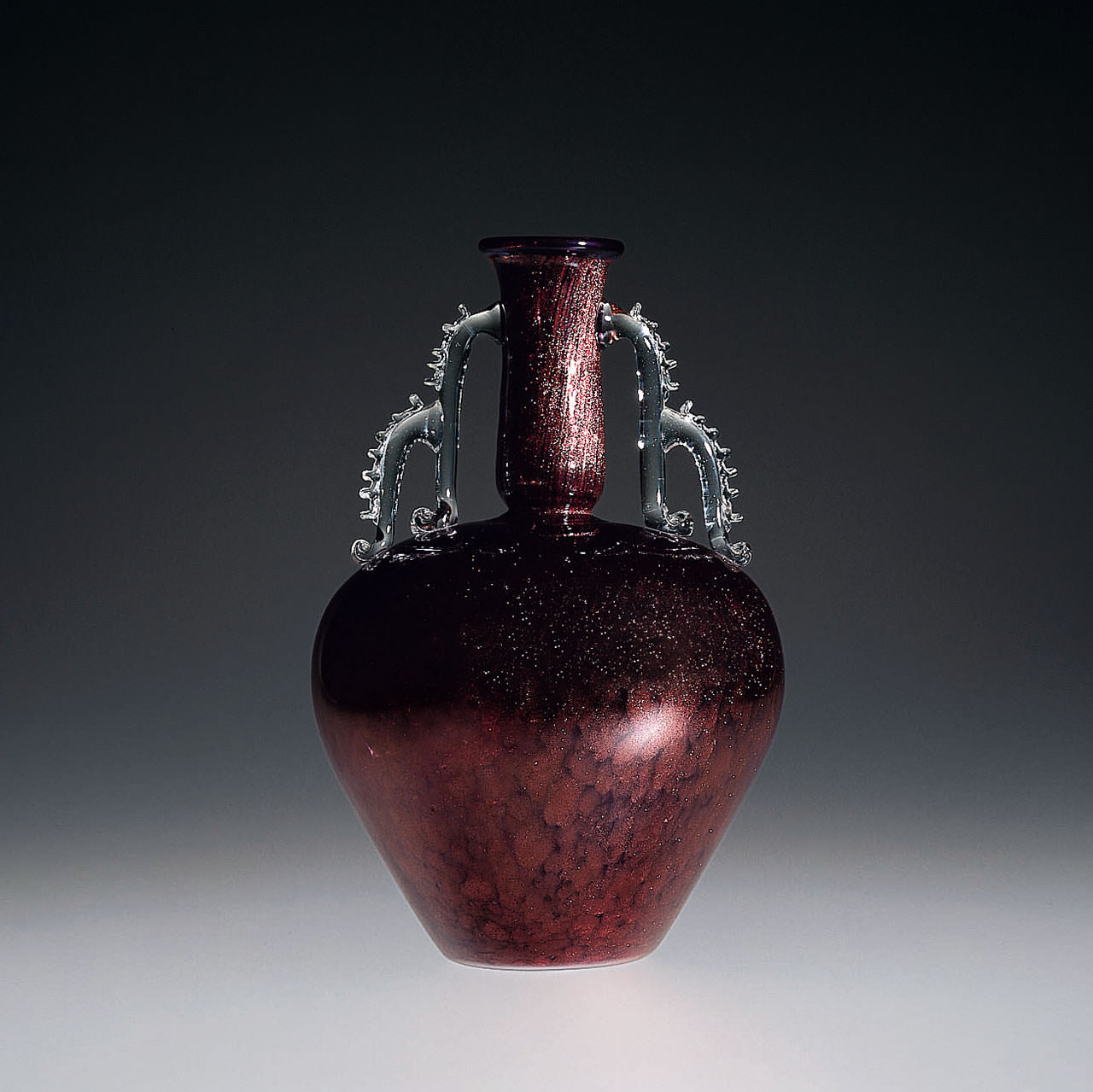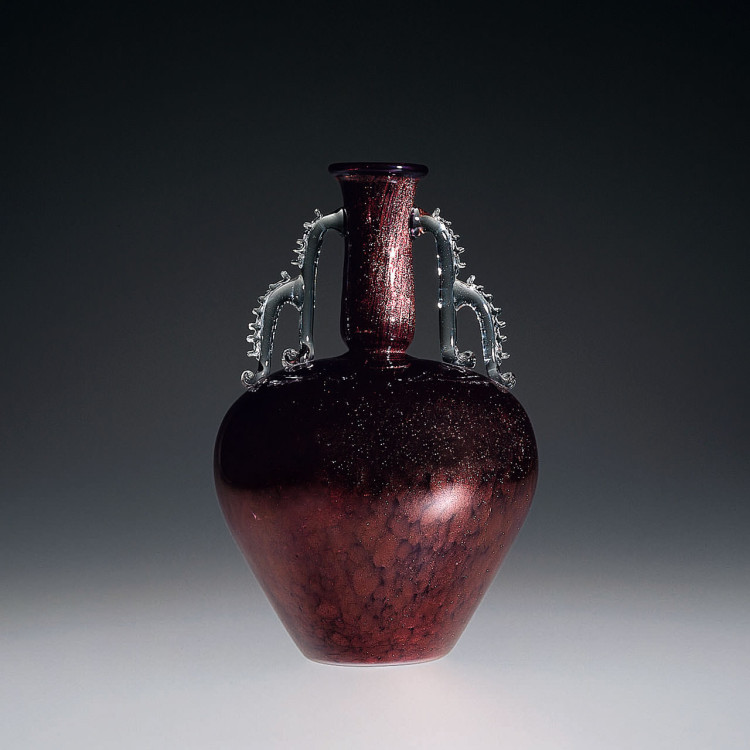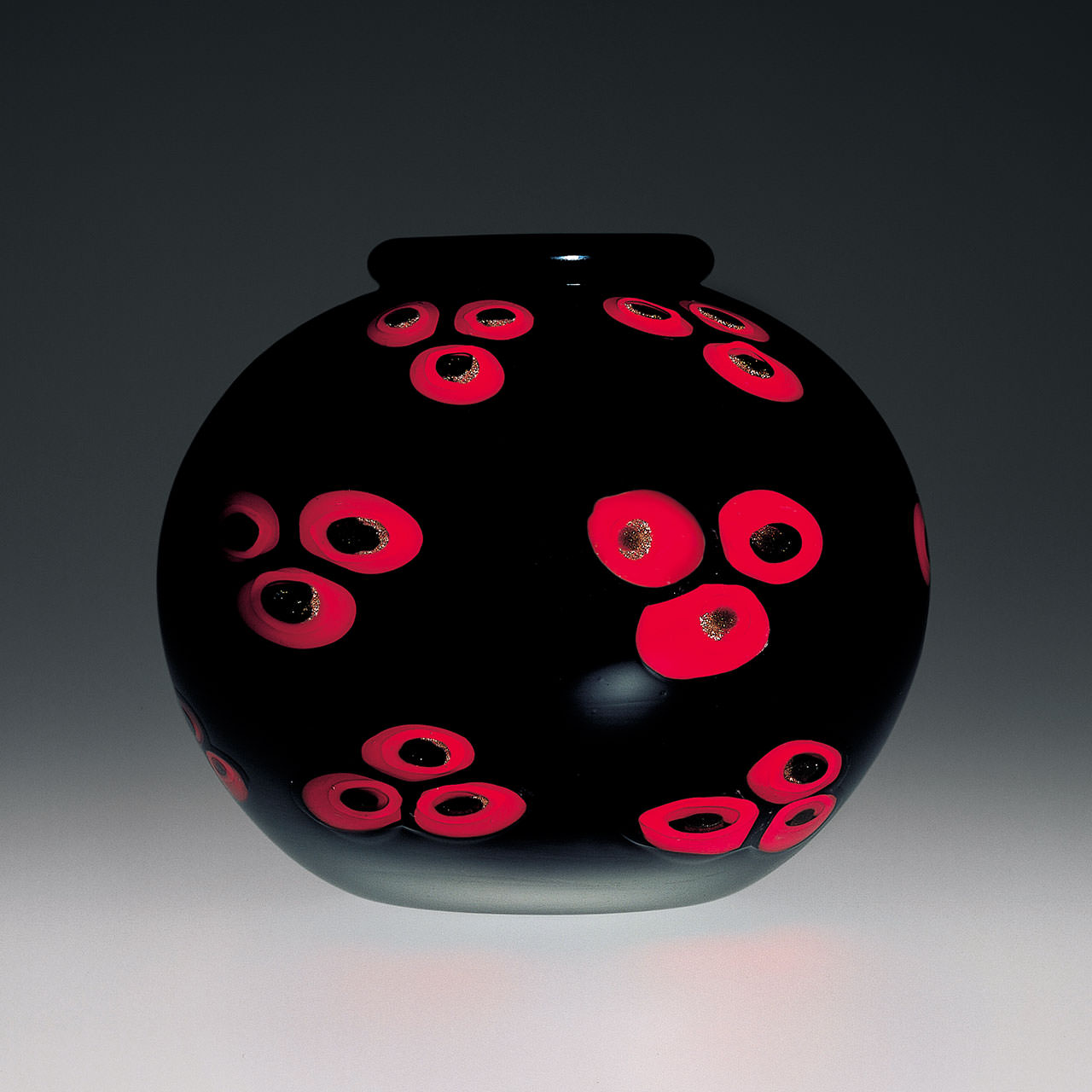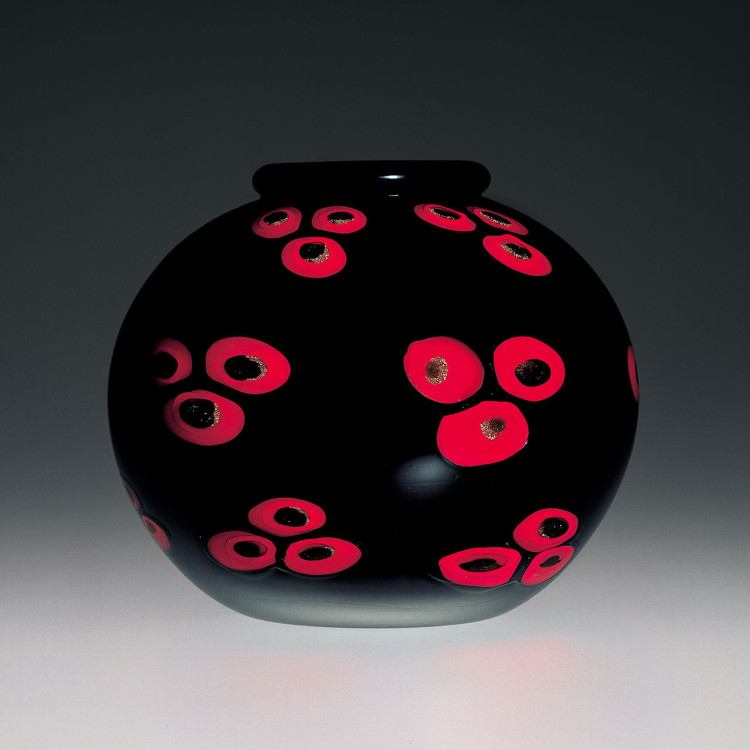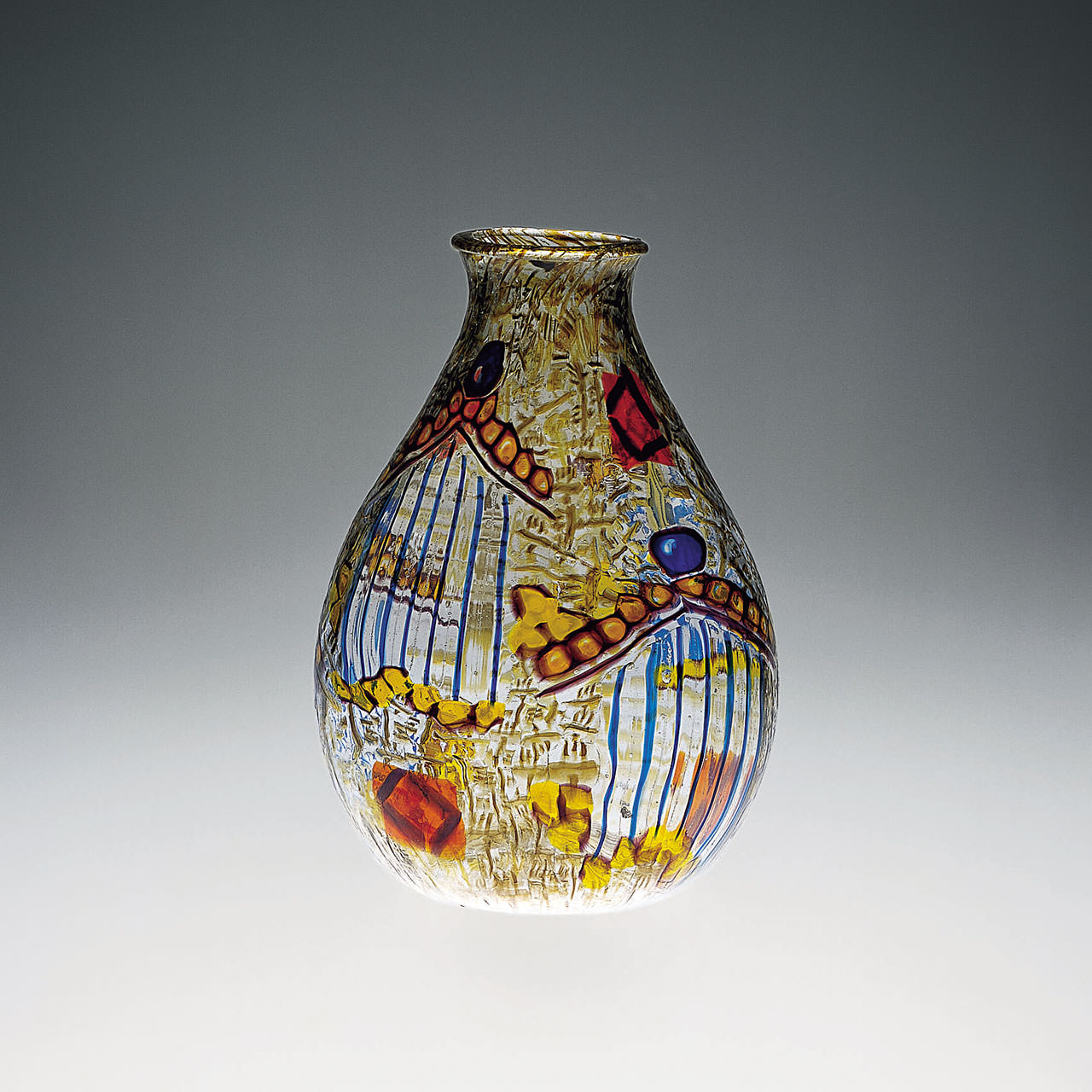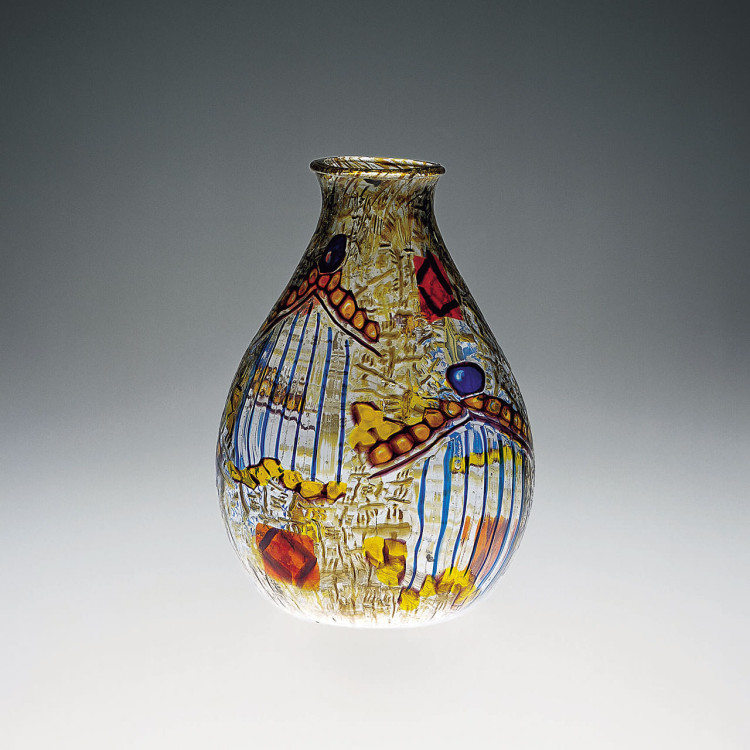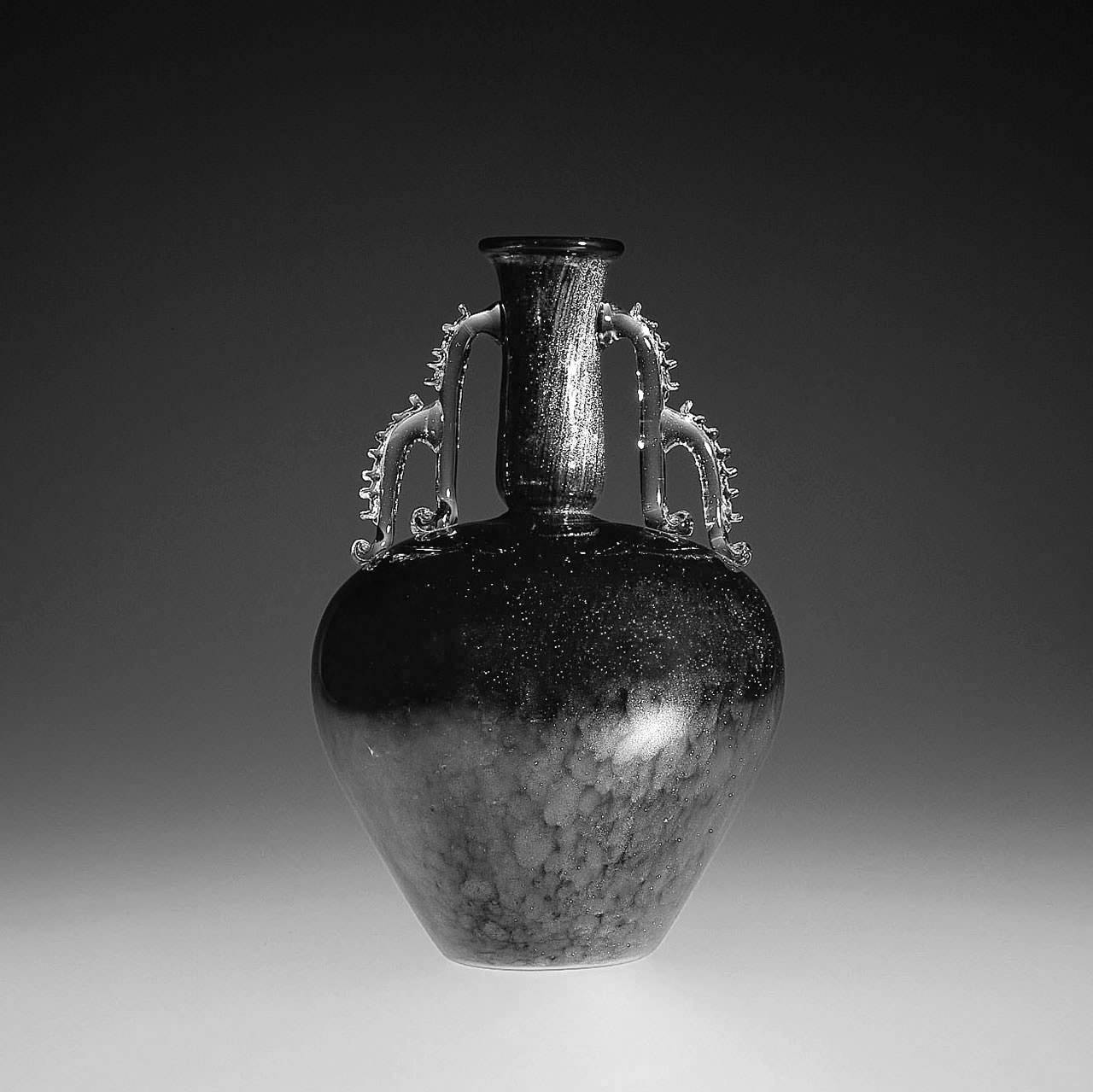
Vetreria Artistica Barovier 1919–1936
In 1919, Artisti Barovier changed its name to Vetreria Artistica Barovier and several new partners were added. Among them were Ercole Barovier and Nicolò Barovier, Benvenuto Barovier’s sons, and Giuseppe Barovier’s son Napoleone. In 1926, Ercole and Nicolò Barovier took over the management of the company and both became artistic directors, creating, among other things, sophisticated multicolored vessels a murrine and singular animals in blown glass. After 1932, Nicolò and Ercole Barovier became sole proprietors of the company. Ercole designed many objects that earned the company remarkable success, among them the Primavera series.
A tireless creator of new collections and glass textures, Ercole Barovier dedicated himself to perfecting the colorazione a caldo senza fusione, which he began using during the second half of the ’30s. In 1936, after the separation from his brother Nicolò, Ercole Barovier became partner of the S.A.I.A.R. Ferro Toso, forming Ferro Toso e Barovier.


